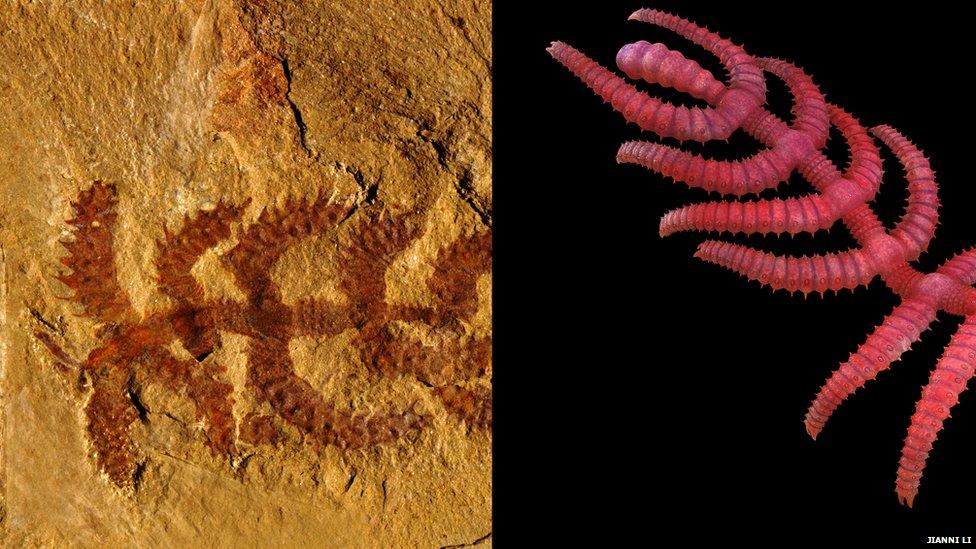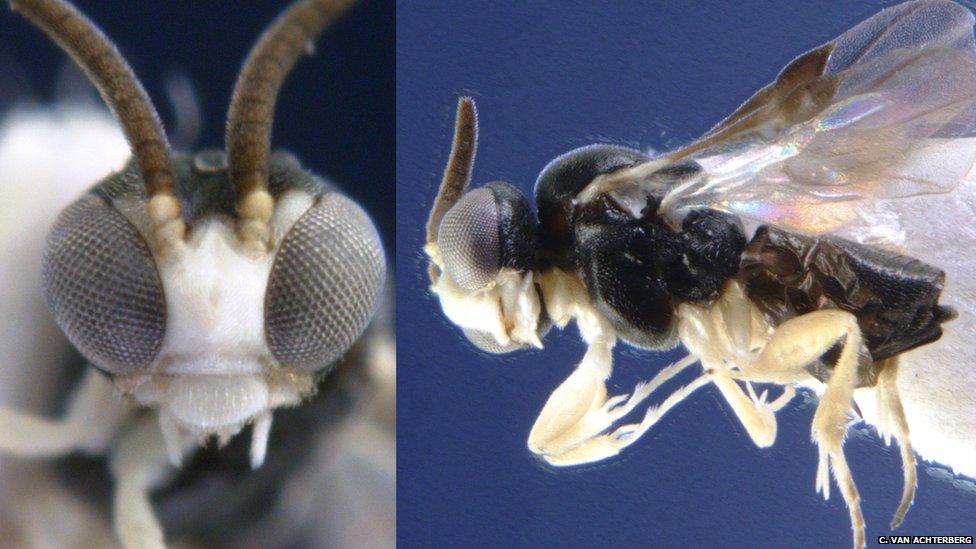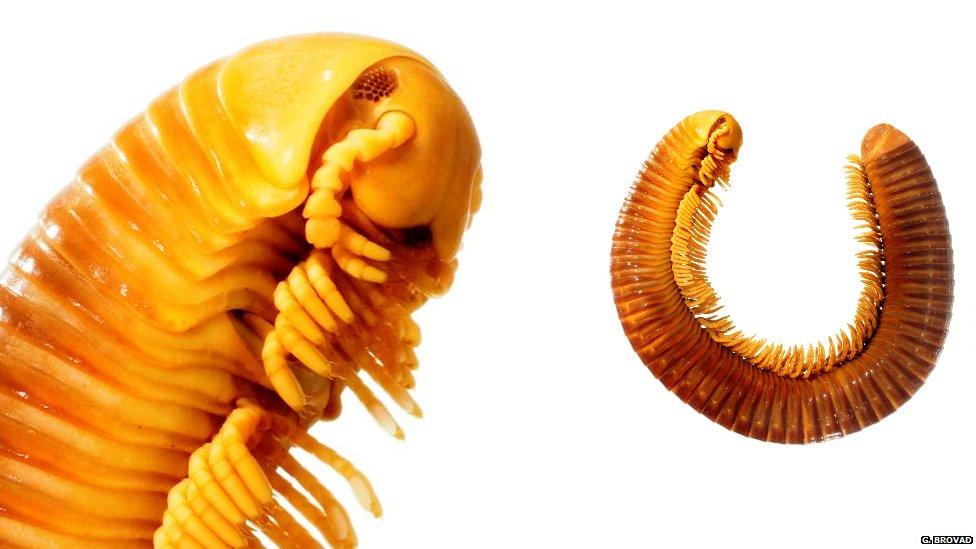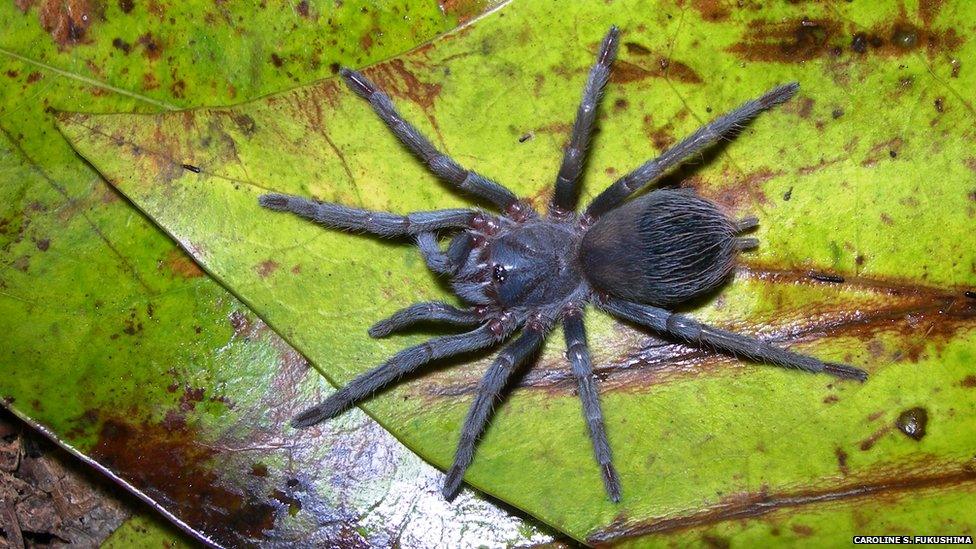Scientists announce their favourite new animal species
- Published

Scientists across the world have annouced their favourite new species of animals and plants that were first described last year. This one is the Walking Cactus - it's actually not a plant but the fossil of the long exitinct lobopod, an animal about 520 million years old. Its segmented legs are clear in the computer recreation on the right, similar to those found in insects and spiders.

This fungus is called the SpongeBob SquarePants mushroom, or to give it its scientific name, spongiforma squarepantsii. Yes, really! It was discovered in Borneo and named after the cartoon character because its body can be squeezed and bounces back to its normal size and shape, like a sponge.

This new species of parasitic wasp hovers just one centimetre above the ground and was discovered in Spain. It's about 2mm long and deposits its eggs inside unsuspecting ants. When the eggs hatch, the ant dies. Ouch.

This is the Wandering Leg Sausage - a giant millipede. The species holds the record as the largest millipede and is 16 centimetres long. Fair warning now: the next slide contains a big spider.

This is Sazima's Tarantula, a hairy blue arachnid. Its body is iridescent, which means it appears to shine different colours depending on how you look at it.

This is a recreation of a snub-nosed monkey discovered in Myanmar (formerly Burma) and it's believed to be critically endangered. It is nicknamed the sneezing monkey - because it sneezes when it rains!

This jellyfish may look pretty but it's venomous. The species is called Tamoya Ohboya and was named by a teacher who assumed that people who are stung by the jellyfish would shout "Oh boy!"
